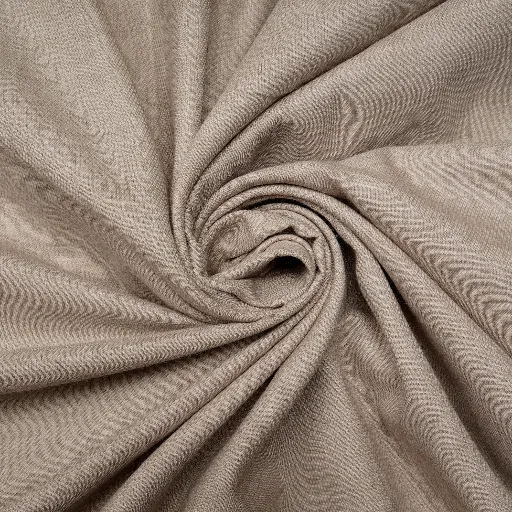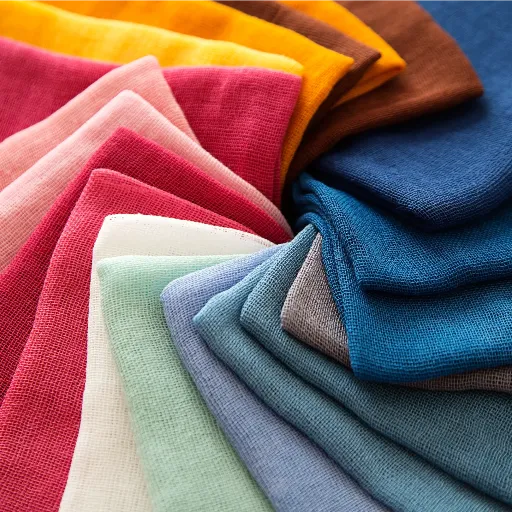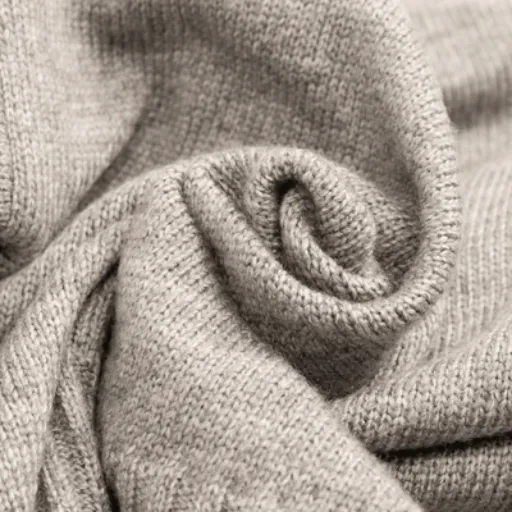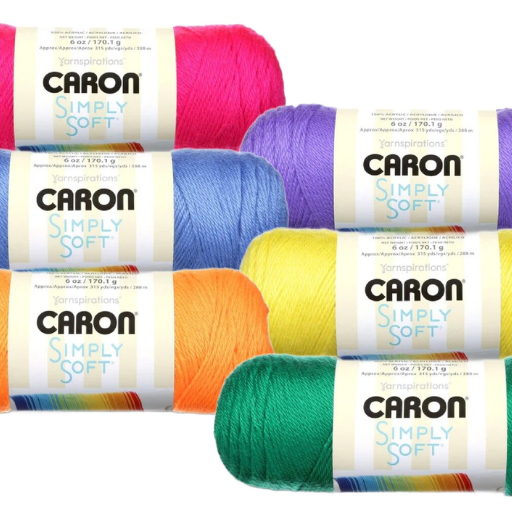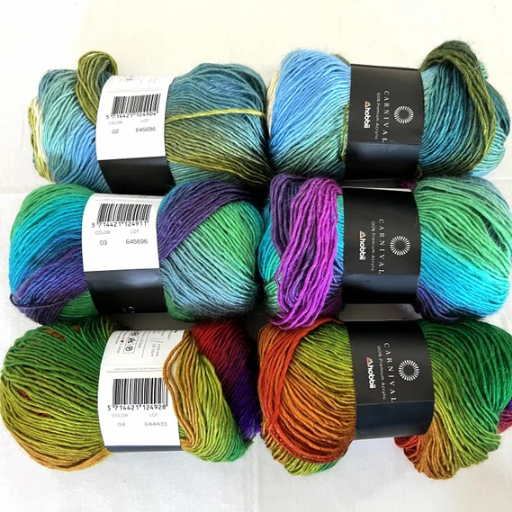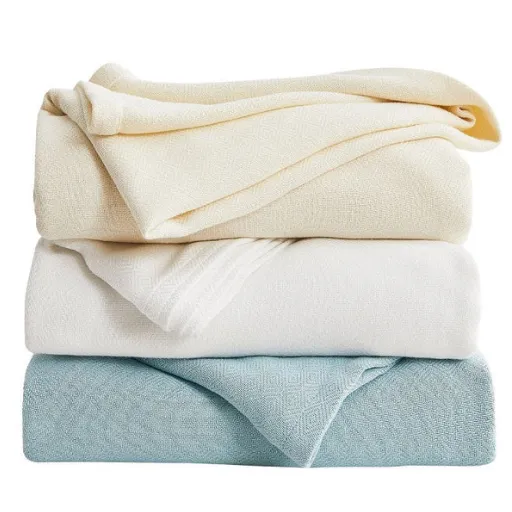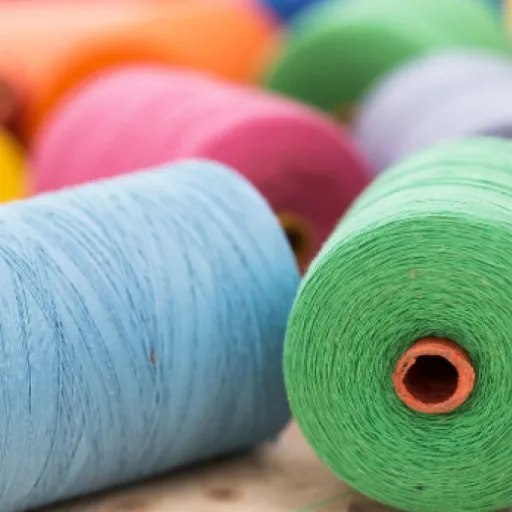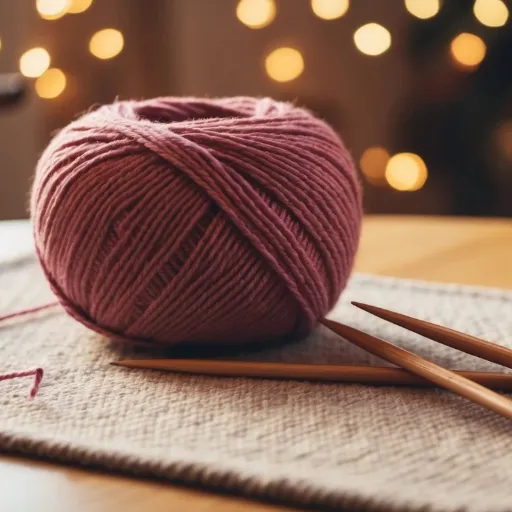The constant evolution of textiles is a worldwide phenomenon, and the innovations and the desires of modern times for new materials are the main forces behind this evolution. Among the new technologies, the covered yarn is the one that, in the spandex and the elastic fabrics, has been a game-changer. With this particular textile technology, one obtains the combination of flexibility, durability, and versatility; hence, it becomes a necessity in the case of manufacturing that covers all the different areas of fashion, medicine, etc. However, what exactly is covered yarn, and in what way does it revolutionize the elastic textiles? In the present discourse, we will elucidate the science of covered yarn, its applications, and the reasons that made it be considered as one of the essential elements of the current fabric design. Whether you are a fashion lover, a product developer, or simply curious about new trends in textiles, this deep dive into spandex and elastic innovations will undoubtedly be exciting and insightful.
Introduction to Covered Yarn
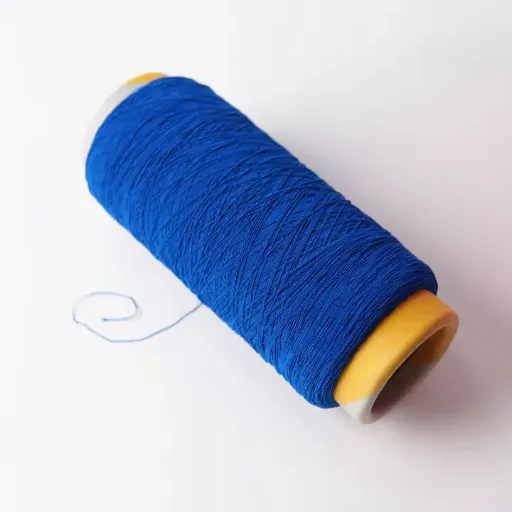
Covered yarn is actually a core yarn that is usually made of spandex and other elastic materials. This core is then wrapped with another type of fiber or yarn, such as nylon or polyester. The result is a combination where stretch, durability, and softness are in perfect balance, thus making it a versatile component for elastic textiles. The outer covering acts as a shield for the elastic core while providing a nice texture and specific aesthetic or functional properties. Covered yarns are extensively utilized in the manufacturing of clothes like activewear, hosiery, and underwear, where comfort, flexibility, and longevity are important factors.
Definition and Composition of Covered Yarn
Covered yarn is a fiber product made by wrapping or twisting an outer layer of fibers around a center yarn that is usually elastic in nature, such as spandex or rubber. The elastic core gives the yarn its stretching and bouncing back property. In contrast, the covering, mostly synthetic or natural fibers like polyester, nylon, or cotton or a blend of these, gives the yarn strength, looks, and usefulness. This pairing makes the yarn very flexible and strong; thus, it can be widely used in the production of various textiles that need to be stretchable and durable, e.g., sportswear, hosiery, and medical textiles.
Benefits of Using Covered Yarn in Textiles
- ✓
Enhanced Stretchability: The covered yarn boasts excellent elasticity and is therefore perfect for clothing that needs to be both flexible and comfortable. - ✓
Durability: The yarn’s outer layer not only makes it stronger but also provides protection ensuring that it will last a long time despite being used constantly. - ✓
Versatility: The yarn’s adaptability makes it suitable for various areas such as sportswear, medical textiles, and even beyond. - ✓
Improved Appearance: One of the advantages of covered yarn is that it can be made to give the fabric a smooth and visually appealing finish, thus beautifying the overall look of the fabric. - ✓
Moisture Control: The choice of outer material will determine whether the covered yarn will contribute to moisture-wicking, thus enhancing breathability and comfort.
Types of Covered Yarn: An Overview
Covered yarns are grouped into different classes according to the covering technique and the materials used. The main types are:
Single Covered Yarn
A core filament such as spandex or rubber is the basis of this yarn which is then covered by a single thread of another material like nylon or polyester. The result is a yarn that is moderately elastic and is thus widely used in pantyhose, sportswear, and medical bandages.
Double Covered Yarn
In this method, the two strands that wrap around the core filament are twisted in opposite directions. As a result of the double covering, the yarns are more durable, smooth, and elastic, hence, the double-covered yarns could be used for processes that require high-quality finishes, such as luxury fabrics and premium intimate wear.
Air Covered Yarn (ACY)
Air covering is a process that involves the blending of the core and covering fibers using compressed air. This process results in soft and very elastic yarn that is also lightweight. Seamless garments, casual wear, and breathable textiles are some of the applications of air-covered yarns.
Elastic Covered Yarn
This type is specifically designed for applications that require the highest flexibility, and hence, elastic materials like spandex are used as the core. It is the most common material in stretchable products like swimwear, activewear, and the like.
By selecting the correct type of covered yarn, manufacturers can enhance not only the aesthetic qualities of their fabrics but also their functionality, making them suitable for various industries and products.
Manufacturing Processes of Covered Yarn
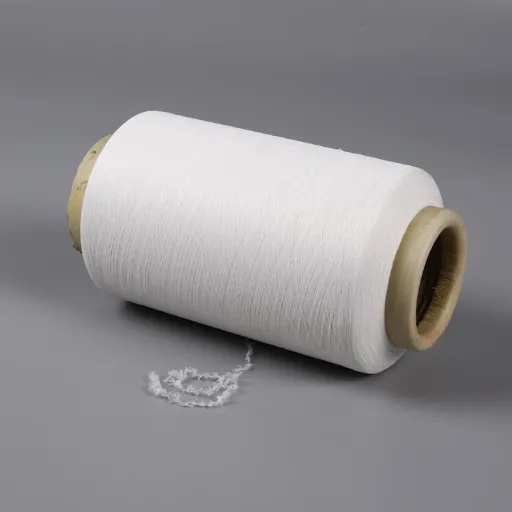
Yarn covering usually consists of two primary methods: single-covering and double-covering. Single-covering enfolds the core material with a layer of filament or spun yarn, which is protective, thus producing basic coverage and flexibility. On the contrary, double-covering produces a two-layer wrapping in opposite directions that gives more durability and stability. The use of sophisticated machines guarantees precision during these processes while ensuring high-quality production that meets the demands of specific industrial applications.
Mechanics of Yarn Covering Techniques
In the textile industry, yarn covering techniques have changed the game by giving methods driven by accuracy for different industrial applications. The operation of these methods is mainly based on modern equipment and cutting-edge processes that combine functionality with sturdiness. Among yarn modification, the two leading ways—single-covering and double-covering—are inseparable support that guarantees the best performance in accordance with application needs.
Single-Covering Process
The process of single-covering involves applying a filament yarn around a core material, typically elastomeric or metallic, to provide basic coverage. This method gives the yarn flexibility and permits the core properties, like elasticity or conductivity, to be retained. Machines that support this process have adjustable speeds from 500 to 1,200 meters per minute. Therefore, that high precision is maintained during the production. The most widely used applications of this technique are stockings, medical dressings, and tapes with elastic properties.
Double-Covering Process
The double-covering technique enhances the stability and strength of the yarn through a wrapping process that covers the core with two layers of filament yarn in opposite directions. The opposite direction wrapping reduces the torsion which in turn makes the yarn more long-lasting and able to withstand external stress. Data from the industry indicate that this method is getting popularity day by day in high-performance sectors like the sportswear, workwear, and technical textiles industries. The double-covering machines can reach linear speeds of over 800 meters per minute, depending on the characteristics of the material used.
Single vs. Double Covered Yarn: Differences and Applications
Single-covered yarn wraps one filament around a core once, while double-covered yarn wraps filaments in two opposite directions, offering higher durability, strength, and smoothness for specific uses.
| Parameter | Single-Covered | Double-Covered |
|---|---|---|
| Wrap Type | Single wrapping | Double wrapping |
| Durability | Moderate | High |
| Smoothness | Moderate | Enhanced |
| Elasticity | Limited | Greater |
| Applications | Basic fabrics | Technical textiles |
| Cost | Lower | Higher |
Technological Innovations in Yarn Production
Technological advancements have had a massive impact on the yarn production process, which is now not only more efficient but also has a wide range of applications and is environmentally friendly. The conventional yarn spinning methods have undergone a radical change through the introduction of automated spinning systems and air-jet spinning. These technologies have made it possible to achieve very high-quality yarn with much faster and exact control over the parameters. Furthermore, the use of machine learning and artificial intelligence in the production process allows one to conduct real-time monitoring as well as technical optimization thus minimizing waste and getting better uniformity. The use of sustainable methods is gradually becoming a norm, with recycling synthetic fibers and using non-toxic dyes as the main practices. These innovations still have a significant role in shaping the textile industry, which in turn produces stronger and more sustainable products.
Types of Covered Yarn
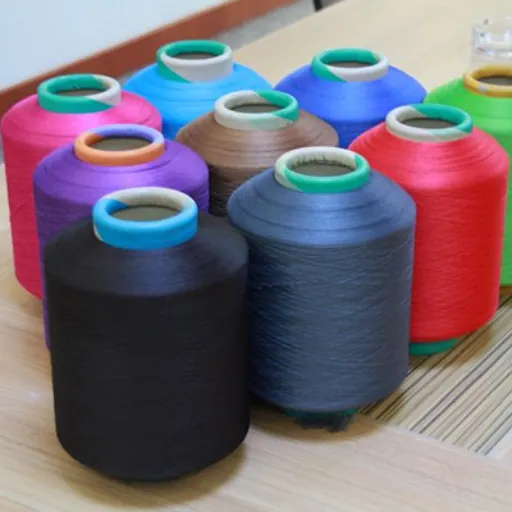
Covered yarn can broadly be categorized into single covered yarn, double covered yarn, air covered yarn, and core-spun yarn.
| Type | Description | Uses | Key Feature |
|---|---|---|---|
| Single Covered | One strand wrapped around core | Hosiery, socks | Simple structure |
| Double Covered | Two strands wrapped in opposite directions | Elastic fabrics | Enhanced strength |
| Air Covered | Filaments joined via air jets | Seamless wear | Soft texture |
| Core-Spun | Core filament with outer fiber wrapping | Woven fabrics | Versatile |
Covered Spandex Yarn: Characteristics and Uses
Covered spandex yarn is a crucial material in the contemporary textile production process. Its main property is that it can superimpose the stretching feature of spandex over the strength and feel of the covering fibers. The method of wrapping, either single or double, guarantees the spandex core’s safety which, in turn, increases the yarn’s resistance to wear and tear.
This kind of yarn is commonly found in a variety of applications that demand stretching and comfort, such as activewear, underwear, hosiery, and medical textiles. Besides, it gives excellent retention of the shape, thus it is used to make body-contouring garments. The use of covered spandex yarn has affected the fashion and textile industries, enabling them to create sleek, comfortable, and functional fabrics over a long period of time. Besides, it meets the rising need for materials that are both light and, at the same time, have high performance in sportswear and casual clothing.
Elastic Yarn and Its Variants in Textile Applications
Elastic yarns, including spandex, latex, and elastomeric fibers, are extensively used in textiles for their properties of stretching and recovering. Spandex, especially, is renowned for its high elasticity and durability, making it ideal for applications in activewear, swimwear, and shapewear. Latex yam, however, is less usual because of its durability concerns, but is still used in specialty products, such as industrial textiles. On the other hand, elastomeric fibers frequently have their applications in medical textiles, compression garments, and socks. The specific functional requirements of the final product determine which variants are selected, thus ensuring the user is provided with flexibility, comfort, and long-term resilience. The versatility of these yarns points out their significant role in today’s textile industry.
Nylon and Polyester Covered Yarns: A Comparative Study
When yarns are compared that are covered with nylon and polyester, the two materials display their individual characteristics and thus, even their applications are varied. The nylon-covered yarns with their outstanding elasticity, strength, and smoothness of texture are the most suitable ones for the applications that need soft and flexible materials, like hosiery, sportswear, and activewear. The polyester-covered yarns, however, are famous for their long life, resistance to abrasion, and various environmental factors such as UV light, thus being the most desirable option for outdoor textiles and high-performance industrial uses.
What sets the two apart mainly is the difference in their performance under various conditions. Nylon offers more in terms of softness and stretch, while polyester excels in longevity and resilience. Development in textile engineering has also opened the door for manufacturers to create hybrid yarns that are made from a mix of nylon, polyester, and other fibers. This situation allows them to take advantage of both materials, thus ensuring optimal performance and being able to use them in a wide range of industries.
Applications of Covered Yarn
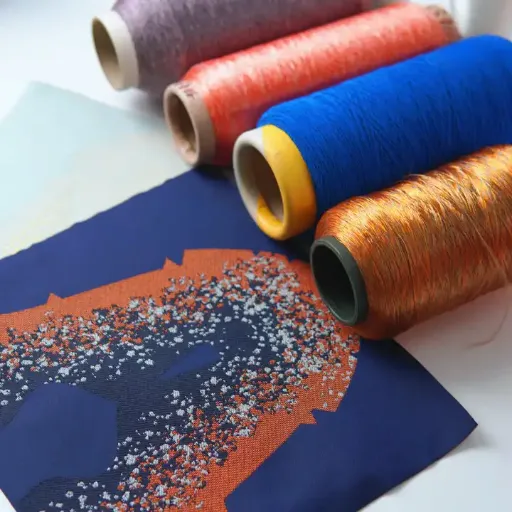
- Sportswear and Activewear
The extensive use of covered yarn in the production of sportswear fabrics guarantees that the fabrics are comfortable, flexible, and have excellent moisture-wicking properties. - Medical Textiles
The endowed elasticity and supportive nature of the medical-grade articles made of covered yarn, such as compression stockings and bandages, are where it is mainly applied. - Hosiery and Socks
The characteristics of strength, elasticity, and a smooth-textured surface are assured by the use of covered yarn in the production of high-quality hosiery and socks. - Seamless Garments
The production of seamless clothing items that include underwear and shapewear is where covered yarn is of great importance in giving a snug and comfortable fit. - Industrial Fabrics
Its use spans various industrial sectors, such as automotive upholstery and technical textiles, where the focus is on durability and performance, among other areas.
Fashion and Apparel: Trends in Covered Yarn Utilization
The application of covered yarn in clothing and fashion is still changing constantly but the driving force behind it is the demand for comfort, flexibility and durability. Athleisure wear, on the other hand, has become the most common trend in fashion, where covered yarn plays a role in creating stretchable, lightweight materials that are very suitable for people with active lifestyles. Furthermore, the use of eco-friendly materials has become a factor in material selection, leading manufacturers to produce covered yarns made with recycled or sustainable fibers. Seamless designs, for example, have become very popular because they perfectly combine style and functionality. In short, covered yarn is one of the factors that allow the textile industry to create new fabrics that are performance-oriented and eco-friendly.
Medical Textiles: The Role of Covered Yarn
The textile industry for medical purposes is the one where covered yarn is an indispensable material, and it is precisely for its properties like accuracy, durability, and comfort that it is readily acknowledged as the main character of the scene. Covered elastic fiber is in great demand for making compression garments, bandages, and orthopedic supports as it can withstand consistent changes in the waves of elasticity and strength. The ingenious pairing of quality spandex or rubber cores with the composite and strong outer fibers makes the goods capable of withstanding the targeted pressure of therapeutic applications while staying supple against the skin. Besides, the progress in the covered yarn technology, such as the introduction of antibacterial and biocompatible materials, has resulted in a safer and more effective medical textile for the patient. These innovations have an ongoing impact on the ever-increasing requirement for high-performance materials in the medical industry.
Industrial Applications: Covered Yarn in Technical Fabrics
Covered yarn is the star of the show among technical fabrics and has won the favor of many industries due to its incredible durability, elasticity, and functionality. The range of applications is quite broad, including protective clothing like fireproof and high-visibility uniforms and materials used in the automobile and construction industries. The fabric’s performance is greatly improved by the combination of the covered yarn’s good tensile strength and resistance to environmental stress, which makes it ideally suited for heavy-duty applications. Furthermore, the use of modern materials such as elastomer or high-tech polymers in the covered yarn guarantees compliance with the stringent industrial requirements of lightweight structures, water resistance, and thermal insulation.
Dyeing and Finishing of Covered Yarn
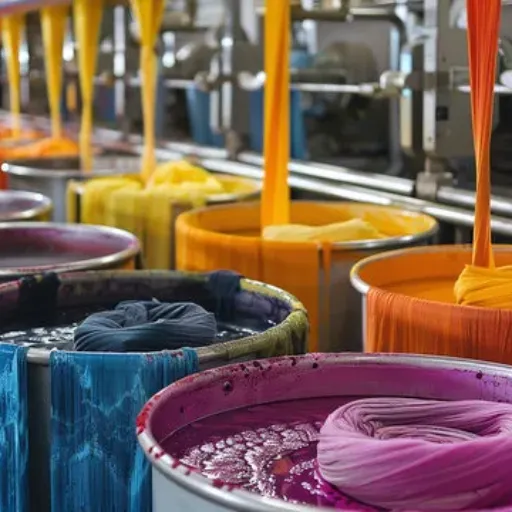
The processes of dyeing and finishing covered yarn are meant to improve the yarn’s look, durability, and performance. Usually, dyeing is done very carefully so that the color goes through evenly all the way to the core materials without losing their integrity. Among the finishing treatments, heat-setting is included; it is a process that makes the yarn’s structure stable, and coating or finishing is done to give the yarn properties like being anti-pilling, water repellent, or having better elasticity. All these treatments make sure that the covered yarn acquires the quality and functionality required for its specific applications.
Dyeing Techniques for Covered Spandex and Elastic Yarns
Dyeing of spandex and elastic yarns, which are covered, demands very skillful techniques to get the uniform color throughout the material and at the same time not to ruin the elasticity or the structural integrity of the yarn. One methodology that is commonly accepted is dye selection that goes well with both the spandex core and the outer covering material, since these components may have different dyeing affinities. Disperse dyes, acid dyes, or reactive dyes are commonly the ones used, depending on the type of covering material being polyester, nylon, or cotton.
The entire process is usually kicked off by the thorough pre-treatment procedure, which includes washing and scouring that serve to get rid of any impurities or residues that are on the yarn. One of the dyeing conditions that is very critical is the control of temperature because too much heat can affect the elasticity of the spandex, and too little may hinder the penetration of the dye.
Moreover, using tension control during the dyeing process guarantees that the yarn’s elastic properties are not affected. The post-dyeing processes, such as washing and stabilization, are equally significant in color locking and durability enhancement. Furthermore, the use of sophisticated techniques like space dyeing or gradient dyeing can also be done to create one-of-a-kind visual effects, thus making the yarn more appealing for upscale applications like fashion or sportswear.
Finishing Processes: Enhancing Performance and Aesthetic
The finishing processes are of great significance since they contribute to making the yarn both functional and aesthetically pleasing. Among others, these processes might include softening treatments that enhance the fabric feel and moisture-wicking finishes that are perfect for sportswear. Furthermore, applying chemical treatments can ensure the yarn meets the expected standards for durability against stains, creases, or even fire, depending on the specific application area. For visual upgrading, the product can be made more attractive by applying techniques like embossing or using optical brightening agents. In the end, the finishing processes guarantee that the yarn not only meets the necessary performance characteristics but also provides the desired visual and tactile qualities.
Environmental Considerations in Dyeing Covered Yarn
In my evaluation of the environmental effects of dyeing covered yarn, I give priority to waste reduction, water conservation, and use of safe dyes. The application of resource-efficient dyeing methods, combined with the maximum possible reuse of water, aims to minimize resource consumption. On top of that, the choice of non-toxic, biodegradable dyes contributes to lesser pollution and is in accordance with environmentally friendly practices. The incorporation of both performance and ecological accountability in the entire process is essential.
Reference Sources
-
Innovations in fibres and textiles for protective clothing – Discusses various yarn spinning techniques, including core yarn spinning with a sheath of different fibers.
-
New Materials in Textile Innovation – Explores innovative textile designs and the advantages of spandex-wrapped yarn products.
-
Study on auxetic and mechanical properties of complex yarn with spandex core and nylon wrap based on braiding technology – Focuses on multicore yarn systems and their mechanical properties, including spandex core and nylon wrap.
-
Design of an environmentally friendly leather-like fabric based on thermoplastic polyurethane covered yarn – Highlights innovations in thermoplastic polyurethane elastic yarn and its applications.
-
The importance of innovation-driven textile research and development in the textile industry – Provides insights into the evolution of elastic textiles, including the invention of elastane by DuPont.
Frequently Asked Questions (FAQs)
What is covered yarn and what does it mean for textiles?
Covered yarn is yarn made by wrapping a core material, such as spandex, with another textile yarn. The built-in structure thus increases the elasticity and stretch properties of the yarn, making it ideal for use in intimate apparel, seamless underwear, and activewear. With it, the covered yarn promotes comfort and sustainability alike for a myriad of textiles on the market.
How does the covering of spandex help the fabric’s elasticity?
The covering of spandex material creates a high degree of elasticity and stretch for knitted fabrics. With spandex being the inner core wrapped in yarn, the covered yarn with its high level of elongation and recovery properties gives tremendous advantages to products requiring stretch and recovery, such as leggings, tights, and sports gear. The stretch and deformation capabilities of the fabric can be adjusted by the ratio of spandex in the covered yarn.
What benefits does everyday clothing stand to gain by using single-covered yarn?
Single covered yarn has a great mix of benefits for everyday clothing, coming from better abrasion resistance and longevity. Wrapping core yarn with an elastic material helps the garment return to its initial shape while remaining supportive and soothing. This particular aspect will enhance the attractiveness of items like sweaters, legwear, and casual apparel, as it shall epitomize the upgrade of clothing that serves both style and purpose.
Can covered yarn be used in home textiles use?
Yes, covered yarn can be used in home textiles, such as upholstery and decorative items. Its acceptance for wear and tear, combined with its ever-increasing aesthetic appeal, makes it a popular choice for curtains, cushions, and other home furnishings.
What is the difference between single-covered yarn and double-covered yarn?
There are two primary differences between single-covered and double-covered yarn: generally, rings around the core yarn. Single-covered yarn involves wrapping one layer, while double-covered yarn entails wrapping two layers. This is the limiting factor determining yarn elasticity, strength, and performance in the applications to which it is utilised, including sportswear and intimate apparel.
In which specific applications would this particular yarn be apt for covered spandex?
Covered spandex strengthens applications demanding stretching and sustainability. This includes gym wear and swimwear, as well as everyday clothes like tights and brassieres. The yarn produced by high-pressure compressed air enhances the efficiency of bonding and recovery in various types of textile products.
What are the pilling and creep properties of the covered yarn?
Covered yarn is usually a good performer in abrasion and pilling resistance, a primary factor in the preservation of the appearance of garments in the future. Yet this yarn’s tendency to creep depends on the specifics of yarn fiber construction and the materials selected. Given the expected heavy use situations, it is essential to pick out just the correct form of covered yarn.








